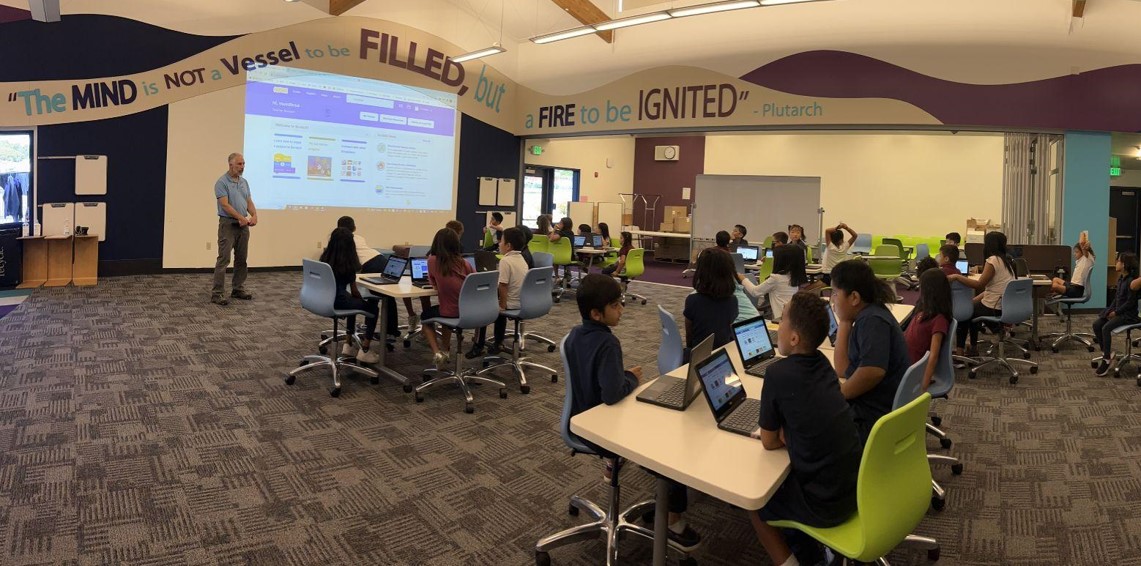MHS will receive about $398,000 in arts funding from California Proposition 28, which grants arts funding to public schools, Principal and Chief Innovator Greg Wohlman said. The school was recently cleared to use the funding by the California Department of Education, he added.
Arts teachers are currently discussing potential uses for funding and the school will form plans for funding over the next month, he added. Overall, MUSD will receive $1.3 million in Proposition 28 funding, which will be distributed among the school sites, Executive Director of Learning and Innovation Priti Johari said. The proposition grants California public schools funding based on the size of its student population and its
share of the state’s low-income students, she added.
“Proposition 28 is like every VAPA (visual and performing arts) teacher’s dream because,
finally, we are rewarded funding for our programs,” said theater teacher Kaila Schwartz, who attended a symposium about Proposition 28 as part of the California Educational Theatre Association.
Arts programs have been historically underfunded, Schwartz said. For example, the theater
funding primarily comes from play ticket sales or out-of-pocket rather than the district, and art teachers often ask students for donations to purchase basic supplies, she said.
“I’ve never seen money like this come in to say, ‘Hey, this is for the arts,’” Wohlman said. “Art teach-
ers are usually scrambling to try to find enough money to just get by.”
A downside is that Proposition 28 caused reduced funding from the Arts, Music and Instructional Materials Block Grant, leading to more funding specifically for the arts but a net decrease in funds overall, Superintendent Cheryl Jordan said.
“The catch is that the state, in its budget that it passed in June, actually reduced the amount of funding that school districts will be getting, and also still has not provided school districts with the funding,” Jordan said.
In addition to funding the arts, schools can also use Proposition 28 to fund other forms of creative expression, including computer coding and animation, according to the California Legislative Information website.“Computer science is a different thing from animation, so I wish that they would have been a little bit more thoughtful in their wording in the proposition itself,” Schwartz said.
Overall, MHS students will benefit from Proposition 28 programs as it will help purchase materials for arts programs and fund new computer science programs, which is useful for many careers, Jordan said.
“So much of the workforce is, now and into the future, really reliant on the concept of understanding what coding is and the way that computer science works,” Jordan said. “I also am excited about the potential for augmenting our music and visual arts courses. I think that those provide students with the experiences that allow them to be building and strengthening that creativity.” MHS will likely receive the funding in February 2024, Schwartz said. Currently, arts teachers are creating wish lists for materials, she added. She is hoping the district hires a director for the upcoming performing arts center and more theater equipment, she said. “We’re not dividing the money equally (among classes), because that’s equality; that’s not equity,” Schwartz said. “We’re spending the money based on what we decide our priorities are and where our needs are.”
New arts programs haven’t yet been implemented at MHS because of recent changes in leadership and a more tentative high school budget, Johari said. Besides funding art, the money may be used to fund interdisciplinary courses at the Innovation Campus, Johari said.
“I’m hoping that students will have access to perhaps more materials, maybe better materials, and perhaps enhancing a program that we didn’t think was possible,” Wohlman said.
Although the proposition mandates that 80% of funding must be spent on new staffing positions and 20% on buying materials, MHS may request a waiver to adjust the percentages depending on the need it evaluates, Wohlman said. MHS will take community input from students, parents, local business partners, and other stakeholders to create a sustainable and effective plan for its funding, he added.
“We’re being very careful about listening to the voices of what we need, not to replicate what’s always been done, but to make sure that we’re creating the best education space in place for our cur-
rent generation,” Wohlman said.
In anticipation of funding, the district has already hired three more full-time elementary teachers and initiated a new, rotating program in the elementary schools, Johari said. Prior elementary arts programs were funded by Title IV and the General Fund, but Proposition 28 allows the district to expand those programs, she added.
“Now, across the elementary schools, students have access to music, visual arts, coding, and performing arts that’s a big step forward,” Johari said.
One challenge has been the shortage of one elementary music teacher and three paraprofessionals, caused by the nationwide teacher shortage and the difficulty of working across multiple school sites, Johari said. Fluctuations in the state budget and ambiguity around proposition guidelines have also caused challenges, Johari added.
“There hasn’t been a lot of clarity, and so we were bold and pushing forward with saying, ‘Okay,we don’t have a plan for everything, but we have an idea for elementary and we’re going to keep going forward, and trusting that the state is not going to withdraw money,’” Johari said. The district “started that process before the money hit our bank accounts.”

